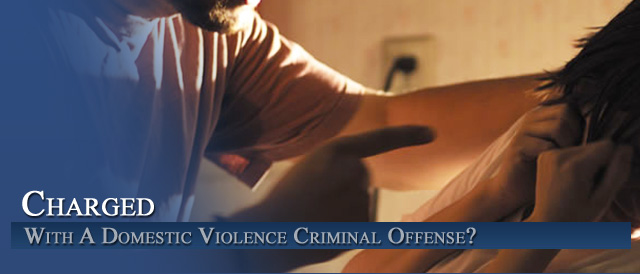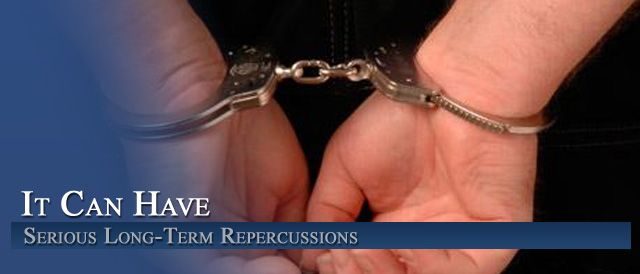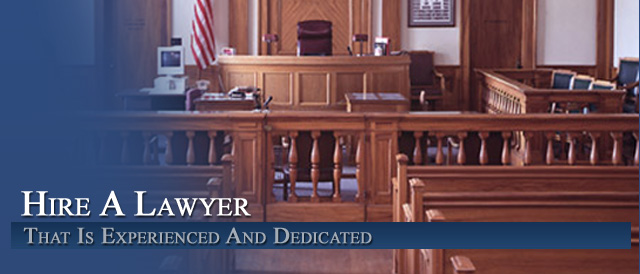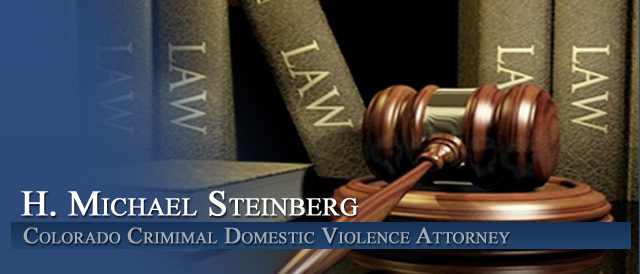




Bail Bonds In Colorado – Understanding Colorado Bail Bond Laws And Rules
FAQ: Colorado’s Bail Bonding System – Typical Bond Schedules and Other Information – Pretrial Release Services
Colorado Bondsman
In the United States, an individual accused of a crime is innocent until proven guilty. Most defendants have the right to be released on bail that is not excessive rather than remaining in jail pending the outcome of a trial.
However, some serious crimes are not bailable offenses under Colorado law, including murder, kidnapping, and treason. In addition, persons arrested for a violent crime who have been previously convicted of a violent crime, or who are out on bail for a violent offense, are also not eligible for bail.
Definition of bail and bond and How They Set Bonds
After an individual is arrested, the court sets the amount of bail, the type of bond, and any other conditions of release. The primary purpose of bail is to ensure that the defendant appears for trial. A bond is an agreement between the defendant and the court under which the defendant agrees to comply with all of the conditions of release and to pay the bail amount if he or she does not appear in court.
The court may order one of two types of bonds, unsecured or secured. With an unsecured bond, the defendant is released on his or her promise to appear, but is required to pay the bail amount if he or she does not appear in court. With a secured bond, the defendant either pays, or promises to pay through a commercial bailbondsman, an amount of money or interest in property before he or she may be released from jail pending trial.
Although there are judicial district guidelines for setting bail, the court has the discretion to set the amount of bail and type of bond on a case-by-case basis after considering criteria set forth in law.
If the defendant cannot afford to pay the bail amount, he or she can pay a fee to get a bond through a commercial bail bondsman, secure a bond using real estate, or remain in jail. In addition to financial conditions, the court may order any number of other conditions of release, which could include supervision by a pretrial services program.
Pretrial services programs.
Under current Colorado law, most defendants qualify for release to supervision by a pretrial services program on either a secured or unsecured bond. There are ten pretrial services programs that are publicly funded and serve over 70 percent of the state’s population. The programs are located primarily along the Front Range, with the exceptions of Weld, Pueblo, and Mesa counties. Pretrial services programs provide two primary functions.
First, they assess defendants and provide information and recommendations to the court regarding the defendant’s risk to public safety and the likelihood that he or she will appear in court. The court uses this information in setting the defendant’s amount of bail and type of bond.
Second, pretrial services programs provide community-based supervision to monitor defendants prior to trial through various methods, such as periodic visits with the defendant, drug testing, and substance abuse treatment. Failure to comply with the pretrial services conditions may result in the defendant being returned to jail while awaiting trial.
An Example of a Typical Bail Bonding Schedule – Boulder
Bonds in Criminal Cases
Authority to Grant Bail. The Bond Commissioners, sheriff and deputy sheriffs of Boulder County are authorized to admit any person charged with or under investigation for any one or more of the offenses set forth in section (3)(c) of this order to bail in the amount set opposite the type of offense or as specified on the existing warrant, except as prohibited by section (3)(e) of this order.
(1) Such bail shall be in the form of cash, certified check, cashiers check, stocks or bonds, real estate, corporate surety or a professional bail bondsman currently licensed by the State of Colorado. Personal checks will not be accepted for bonds.
Bond Requirements and Schedule of Bonds
(1) The amount of bond set opposite the specified criminal offense in the Schedule of Bonds in this order shall be the bail for the offense or offenses charged unless otherwise ordered by a judge or magistrate, or unless prohibited by section (e) of this order.
(2) If a person is charged with more than one offense, no greater bail than the highest bail for any single offense shall be required. Bail shall not be accumulated.
(3) If two or more persons are charged with an offense or offenses, the amount of bond set forth in the Schedule of Bonds in this order shall be for each person and not the total amount for all persons charged.
(4) All bonds accepted under this order shall command the person charged with the offense to appear before the court on the court’s regularly scheduled advisement day except that any person arrested for a crime or offense with an underlying factual basis of domestic violence as defined in section 18-6-800.3, C.R.S. shall be interviewed by a Twentieth Judicial District Bond Commissioner for the purposes of the setting of bond and imposition of section 18-1-1001, C.R.S., Protection Order Against Defendant.
Bond in Colorado Domestic Violence Cases
No person arrested for a crime or offense with an underlying factual basis of domestic violence may be released on bond unless the provisions of section 18-1-1001(5), C.R.S. are fulfilled; that is, before a defendant is released on bail, the court shall state the terms of the protection order, including any additional provisions added pursuant to subsection (3) of 18-1-1001, to the defendant on the record and the court shall further require the defendant to acknowledge the protection order as a condition of any bond for his or her release.
(5) The following bond conditions require a judicial order before the defendant may be released [UNLESS THE DEFENDANT IS ON PROBATION AND THE CONDITIONS OF HIS PROBATION CONTAIN ANY OF THE FOLLOWING-IF SO, NO JUDICIAL ORDER IS REQUIRED]:
a) Other “no contact” provisions will be recommended when necessary to protect the safety of the alleged victim or when the defendant is accused of entering or remaining in a business, store, school or other building in a manner that is disruptive or potentially harmful to others or when the defendant is a current or former employee of the complainant. This condition may also be recommended if the bond commissioner believes that other conditions or circumstances exist that make the imposition of a “no contact” order appropriate.
b) “No contact with people under the age of 18” shall be recommended when the offense involves harm or potential harm to a person who is younger than 18 years of age.
c) “No weapons” shall be recommended when the defendant is charged with crimes in which the defendant was in possession of a weapon.
d) “No drugs or alcohol” will be recommended when the defendant was under the influence of drugs and/or alcohol at the time of the commission of the offense regardless of whether the defendant is charged with a drug offense.
e) “No driving without a license” will not be used as a bond condition.
Boulder’s Schedule of Bonds:
Felony Bonds
18-4-202 First Degree Burglary 20,000.00
18-4-203 Second Degree Burglary of Dwelling 20,000.00
18-4-204 Third Degree Burglary 1,500.00
18-4-401 Theft between $1,000-$20,000 2,500.00 – Theft over $20,000 3,500.00
18-4-402 Theft of Rental Property $1,000-$20,000 2,500.00 – Over $20,000 3,500.00
18-4-409 Aggravated Motor Vehicle theft in the First Degree (all sections) 2,500.00
18-4-410 Theft by receiving between $1,000-$20,000 2,500.00 – Theft by receiving over $20,000 3,500.00
18-4-502 First Degree Criminal Trespass 1,500.00
18-4-602 Theft of Sound Recordings 1,500.00
18-5-102 First Degree Forgery 2,500.00
18-5-105 Criminal Possession of a First Degree Forged Instrument 1,500.00
18-5-109 Criminal Possession of Forgery Devices 1,500.00
18-5-113 Criminal Impersonation 1,500.00
18-5-205 (3)(c)(d) Fraud by Check 2,500.00
18-5-206 (1)(c)(d) Defrauding a Secured Creditor 2,500.00
(2)(c)(d) Defrauding a Secured Creditor 2,500.00
18-5-702 (3)(c)(d) Unauthorized Use of Financial Transaction Device 2,500.00
18-5-903 (2)(b), (2)(c) Criminal Possession of Financial Transaction Device 2,500.00
18-5-705 Criminal Possession or Sale of a Blank Financial Transaction Device 2,500.00
18-5-706 Criminal Possession of Forgery Devices 1,500.00
18-5-707 Unlawful Manufacture of a Financial Transaction Device 2,500.00
18-5.5-102 Computer Crime $1,000-$20,000 2,500.00 Over $20,000 3,500.00
18-18-404 Unlawful Use of a Controlled Substance as Class 5 Felony 1,500.00
18-18-405 Possession of Controlled Substance (Sale requires D.A. approval) 2,500.00
18-18-405(1)(a)Unlawful Possession of Chemical or Supplies with Intent to Manufacture a Schedule I or II Controlled Substance 2,500.00
18-18-405(1)(a) Unlawful Distribution of a Schedule I or II Controlled Substance 50,000.00
18-18-406 Possession of Marijuana as other than Misdemeanor (Sale or cultivation requires D.A. approval) 2,500.00
18-18-412.5 Unlawful Possession of Methamphetamine Manufacturing Materials 2,500.00
If the offense described is a crime of attempt, accessory, complicity, or conspiracy, the bond amount shall be the same as listed for the substantive crime.
Misdemeanor Narcotics and Drug Violations:
18-18-404 Possession, Sale or Use of Controlled Substance 1,000.00
18-18-405 as Class I Misdemeanor 1,000.00
18-18-406 Possession of Less Than One Ounce of Cannabis 25.00
FALL OTHERS AMOUNT OF FINE + 37% SURCHARGE
Class One Misdemeanors: 1,000.00
Class Two Misdemeanors: 500.00
Class Three Misdemeanors: 100.00
Petty Offenses:
Class One Petty Offenses 50.00
Class Two Petty Offenses 25.00
Traffic Offenses:
42-2-138 or Driving under Suspension, Denial
42-7-422 Cancellation or Revocation 500.00
42-2-138 Driving under Revocation – Alcohol Restraint 3,000.00
42-2-101 No Operator’s License 50.00
42-4-1402 Careless Driving: Injury to Person 1,000.00
42-2-1601 Hit and Run: Injury to Person 1,000.00
42-2-1604 Hit and Run: Damage to Property Only 300.00 through 1600.00
42-4-107 Disobeying a Police Officer 300.00
42-4-1301 Driving Under the Influence:
1st Offense 500.00
2nd Offense 1,000.00
3rd Offense Bond Not Authorized
Driving While Ability Impaired: 1st and 2nd Offense 300.00 – 3rd Offense Bond Not Authorized
42-4-1409 No Proof of Insurance 200.00
42-4-1401 Reckless Driving 300.00
42-4-1413 Eluding an Officer 300.00
ALL OTHER SECOND CLASS TRAFFIC OFFENSES 100.00
UNCLASSIFIED TRAFFIC VIOLATIONS 50.00
How Do They Set Bail?
KEY STATUTES FOR SETTING BOND IN COLORADO – The Statute (LAW) Applied To Set Bail
CRS 16-4-105. Selection by judge of the amount of bail and type of bond – criteria.
(1) In determining the amount of bail and the type of bond to be furnished by the defendant, the judge fixing the same shall consider and be governed by the following criteria:
(a) The amount of bail shall not be oppressive;
(b) When a person is charged with an offense punishable by fine only, the amount of bail shall not exceed the amount of the maximum penalty;
(c) The defendant’s employment status and history and his financial condition;
(d) The nature and extent of his family relationships;
(e) His past and present residences;
(f) His character and reputation;
(g) Identity of persons who agree to assist him in attending court at the proper time;
(h) The nature of the offense presently charged and the apparent probability of conviction and the likely sentence;
(i) The defendant’s prior criminal record, if any, and, if he previously has been released pending trial, whether he appeared as required;
(j) Any facts indicating the possibility of violations of law if the defendant is released without restrictions;
(k) Any facts indicating a likelihood that there will be an intimidation or harassment of possible witnesses by the defendant;
(k.5) The fact that the defendant is accused of unlawfully using or distributing controlled substances on the grounds of any public or private elementary, middle, or secondary school, or within one thousand feet of the perimeter of any such school grounds on any street, alley, parkway, sidewalk, public park, playground, or other area of premises which is accessible to the public, or within any private dwelling which is accessible to the public for the purpose of the sale, distribution, use, or exchange of controlled substances in violation of article 18 of title 18, CRS, or in any school bus engaged in the transportation of persons who are students at any public or private elementary, middle, or secondary school;
(k.7) The fact that the defendant is accused of soliciting, inducing, encouraging, intimidating, employing, or procuring a child to act as his agent to assist in the unlawful distribution, manufacture, dispensing, sale, or possession for the purposes of sale of any controlled substance;
(l) Any other facts tending to indicate that the defendant has strong ties to the community and is not likely to flee the jurisdiction;
(m) Unless the district attorney consents, no person shall be released on personal recognizance if he is presently at liberty on another bond of any kind in another criminal action involving a felony or a class 1 misdemeanor;
(n) Unless the district attorney consents, no person shall be released on personal recognizance if he has a record of conviction of a class 1 misdemeanor within two years, or a felony within five years, prior to the release hearing;
(n.5) Unless the district attorney consents, no person who is eighteen years of age or older or is being charged as an adult pursuant to CRS 19-2-517, or transferred to the district court pursuant to CRS 19-2-518, shall be released on personal recognizance if the person’s criminal record indicates that he or she failed to appear on bond in any case involving a felony or class 1 misdemeanor charge in the preceding five years;
(o) No person shall be released on personal recognizance until and unless the judge ordering the release has before him reliable information concerning the accused, prepared or verified by a person designated by the court, or substantiated by sworn testimony at a hearing before the judge, from which an intelligent decision based on the criteria set forth in this section can be made. Such information shall be submitted either orally or in writing without unnecessary delay.
(p) No person shall be released on personal recognizance if, at the time of such application, the person is presently on release under surety bond for felony or class 1 misdemeanor charges unless the surety thereon is notified and afforded an opportunity to surrender the person into custody on such terms as the judge deems just under the provisions of section 16-4-108;
(p.5) Any defendant who fails to appear while free on bond in conjunction with a class 1 misdemeanor or a felony and who is subsequently arrested shall not be eligible for a personal recognizance bond for that case in which such defendant failed to appear; except that, if the defendant can provide satisfactory evidence to the court that the failure to appear was due to circumstances or events beyond the control of the defendant, the court shall have the discretion to grant a personal recognizance bond;
(q) If a pretrial services program as described in subsection (3) of this section exists in the judicial district in which the defendant is being held, the judge fixing the amount of bail and the type of bond to be furnished by the defendant may utilize the services provided by such program in entering an order concerning such defendant.
(2) If a defendant has been required by the judge to furnish a secured bond and he is unable within two days to furnish security, if he believes that, upon the presentation of evidence not heard or considered by the judge, he would be entitled to release on personal recognizance, such defendant may file a written motion for reconsideration in which he shall set forth the matters not theretofore considered by the judge who entered the order for bond in the first instance. The judge may summarily deny the motion or promptly conduct a hearing thereon.
(3) (a) The chief judge of any judicial district may order any persons who are applying for pretrial release to be evaluated by a pretrial services program established pursuant to this subsection (3) which shall make a recommendation regarding whether there should be a pretrial release of any particular defendant. Such chief judge may make such order in any or all of the counties of such chief judge’s district.
(b) Any county or city and county may establish a pretrial services program which may be utilized by the district court of such county or city and county. Any pretrial services program shall be established pursuant to a plan formulated by a community advisory board created for such purpose and appointed by the chief judge of the judicial district. Membership upon such community advisory board shall include, but shall not be limited to, a representative of a local law enforcement agency, a representative of the district attorney, a representative of the public defender, and a representative of the citizens at large. The plan formulated by such community advisory board shall be approved by the chief judge of the judicial district prior to the establishment and utilization of the pretrial services program. The requirement contained in this paragraph (b) that any pretrial services program be established pursuant to a plan formulated by a community advisory board shall not apply to any pretrial services program which exists prior to May 31, 1991.
(c) Any pretrial services program approved pursuant to paragraph (b) of this subsection (3) shall meet the following criteria:
(I) Such program shall establish a procedure for the screening of persons who are detained due to an arrest for the alleged commission of a crime so that such information may be provided to the judge who is setting the amount of bail and type of bond. The program shall provide such information as will provide the court with the ability to make a more appropriate initial bond decision which is based upon facts relating to the defendant’s risk of danger to the community and the defendant’s risk of failure to appear for court.
(II) Such program shall make all reasonable attempts to provide the court with such information delineated in subsection (1) of this section as is appropriate to each defendant.
(d) Any pretrial services program may also include different methods and levels of community-based supervision as a condition of pretrial release. The program may use established supervision methods for defendants who are released prior to trial in order to decrease unnecessary pretrial incarceration. The program may include any of the following conditions for pretrial release or any combination thereof:
(I) Periodic telephone contact with the defendant;
(II) Periodic office visits by the defendant to the pretrial services program;
(III) Periodic home visits to the defendant’s home;
(IV) Periodic drug testing of the defendant;
(V) Mental health or substance abuse treatment for the defendant, including residential treatment;
(VI) Domestic violence counseling for the defendant;
(VII) Electronic monitoring of the defendant; and
(VIII) Pretrial work release of the defendant.
(e) Commencing November 1, 2000, each pretrial services program established pursuant to this subsection (3) shall provide an annual report to the state judicial department no later than November 1 of each year, regardless of whether the program existed prior to May 31, 1991. The judicial department shall present an annual combined report to the house and senate judiciary committees of the general assembly. The report shall include but is not limited to the following information:
(I) The number of interviews conducted with defendants;
(II) The number and nature of recommendations made;
(III) The number of defendants under pretrial release supervision who failed to appear; and
(IV) Any additional information the state judicial department may request.
(f) Any pretrial services program established pursuant to this subsection (3) shall not be eligible for further program funding if the program has failed to provide the reports required in paragraph (e) of this subsection (3).
Other Articles of Interest:
- How Denver City Domestic Violence Cases Are Different – The Denver Municipal Ordinance Domestic Violence Exception
- Colorado Domestic Violence Law Series – Bail Bonds – How Are They Set? What Criteria Is Applied?
- Colorado Criminal Law – Understanding An Allegation Of Stalking Behavior – The Crime Of Stalking in Colorado
- Colorado Criminal Law – Understanding Colorado’s Scheme of Adult Sentencing Laws
- Colorado Criminal Law – What If I Run? – Absconding – Fleeing A Colorado Criminal Case – Evidence Of Flight At Trial












